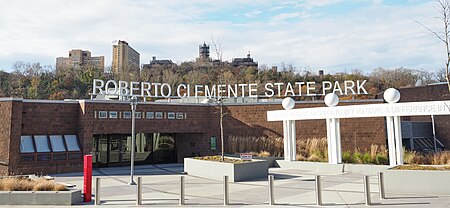Roberto Clemente State Park
1973 establishments in New York CityAC with 0 elementsMorris Heights, BronxNew York City geography stubsParks in the Bronx ... and 2 more
Protected areas established in 1973State parks of New York (state)

Roberto Clemente State Park is a 25-acre (10 ha) state park in Morris Heights, Bronx, New York City. The park is adjacent to the Harlem River, the Major Deegan Expressway (Interstate 87), and the Morris Heights station on Metro-North's Hudson Line.
Excerpt from the Wikipedia article Roberto Clemente State Park (License: CC BY-SA 3.0, Authors, Images).Roberto Clemente State Park
Major Deegan Expressway, New York The Bronx
Geographical coordinates (GPS) Address Nearby Places Show on map
Geographical coordinates (GPS)
| Latitude | Longitude |
|---|---|
| N 40.855 ° | E -73.92 ° |
Address
Morris Heights
Major Deegan Expressway
10453 New York, The Bronx
New York, United States
Open on Google Maps






